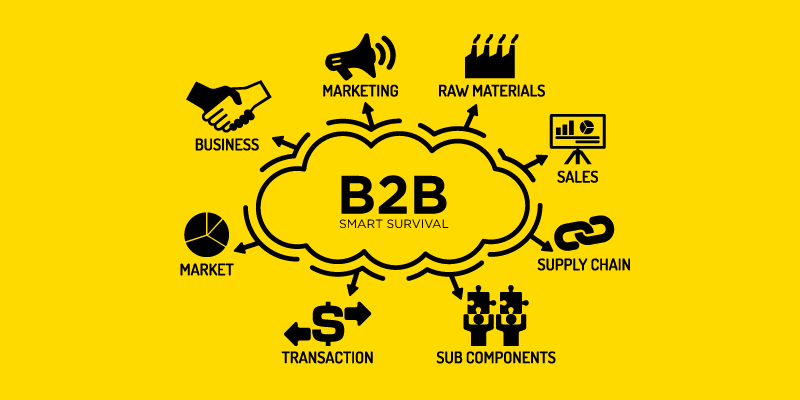
Future of B2B Sales: Trends and Predictions for the Fast Forward Era
5 Strategies to Look at. Command and Control will not work.
By Ramdas Shenoy
We all went online in the COVID world. Online became the new normal. Yesterday, being the old me, I did not have cash when I got down from a Uber, and the cab driver immediately asked me to use Google Pay. The new salesperson is forced to make remote sales, and when I asked some of my friends who are business owners, COVID, surprisingly was a good sales period for many. Customers have become tech-savvy, and many sales are becoming digital; slowly, we are moving towards hybrid models.
The present scene under the new normal of ‘business as usual’ despite the Ukraine-Russia conflict, the great resignation, and the new global slowdown all calls for an urgent need for change. The situation is challenging yet exciting; some companies use the macroeconomic environment to leapfrog competitors. Leading companies are seizing the opportunity and taking action with great success.
You would have often heard that ‘nothing is permanent except change’, but when we spoke to some business leaders, we concluded with some future scenarios of B2B sales.
1. The digital experience calls for better UX even in the B2B world, and the customers expect personalizeds experience that was previously limited to end users. Even in B2B sales, customers are looking for performance guarantees. Customer service has to be real-time. Even B2B customers do not like to wait
The status of the order should be available online. The customers have many touch points, and all the information gathered from the touch points should be used to improve the customer’s overall experience. Business analytics is the new animal that needs to be tamed to understand and improve engagement with the customer.
CRM tools are no longer a fashion statement – to have, but are important to understand the buying behaviour to plan your business cycle accordingly. Business decisions which AI fuels have become more authoritarian from the earlier predictive models. Even communication design is customized with tech to cater to the person concerned.
2. From cars to employee attendance, everything is going Hybrid. In today’s context, one cannot stick to one channel….the idea is to have a Hybrid channel model.
It would be best to build different ways to reach your customers—conventional channel partners, the influencer community, the e-commerce route and others. It all depends on how your customer wants to buy the product.
Even in a B2B channel space, customers prefer remote interactions and even digital self-service. Sales are happening in the digital route, with more than 2/3rd of sales happening in the hybrid mode. What is happening is that now even an Inside sales executive can close the sales, which has also helped reduce the cost of sales.
Earlier influencers only played a role in the B2C space, but now in the B2B world, incentives can be offered to the referrers. Even B2B brands appoint brand ambassadors to influence, say, more towards influencing a buying decision.
Now you also create communities for thought leadership on social media, from technology to management practices to recruitment.
If you need some ideas about what to read next, here they are:
3. Teams to work together to boost your sales. Sales will not be confined to a sales function. Still, organizations will win orders as a team, where sales(obviously), marketing, product, technology, finance and support together will weave the offering. CRM technologies will be the new requisite for most organizations. Martech will be the new normal. Everyone will be interested in the results,hem, not how you achieved them. The decisions will be data-driven, and best practices musmust be followed without debate.
Gone are the days of the traditional sales guy, who believed in only pushing numbers but needed to know and map the customers across the board. More than IQ and EQ, you need to have eQ- which is an empathy quotient. You will have to be in the customer’s shoes to understand his pain points, breathe his problems, and see how your solution will give him an advantage.
4. Today, the customer is well-informed, and digital technology is no longer a hindrance. From students to teachers to the commoner, people are now used to getting trained online. Talent management and development has new challenges and calls for new ways to attract, retain and train talent. The idea is to focus on the business outcome, and sales become a by-product. Happiness has become an important factor in an organization’s growth. Talent management also calls for re-skilling front-line sales guys with leadership skills. The new age generation looks for immediate gratification but also needs a long-term strategic incentive.
5. Create a success model in which you can duplicate the success. You need to manage the knowledge cell better and learn from the learnings for building a sustainable business. Many organizations miss this point and keep inventing wheels when they already have a knowledge resource, but without proper documentation, the organization misses an important element of the organization.
Ramdas Shenoy is Partner at Soul Catalysts; Director at GetSet Labs, Director at Blue 24 Media and Marketing Solutions. He is the Founder of the Media portal stirfryMBA. The author wishes to thank Mr PK Krishnaprasad from SymphonyTech, Mr Sanjay Jha from Mahindra First Choice, Mr Subrato Mazumdar from Indus Towers.


